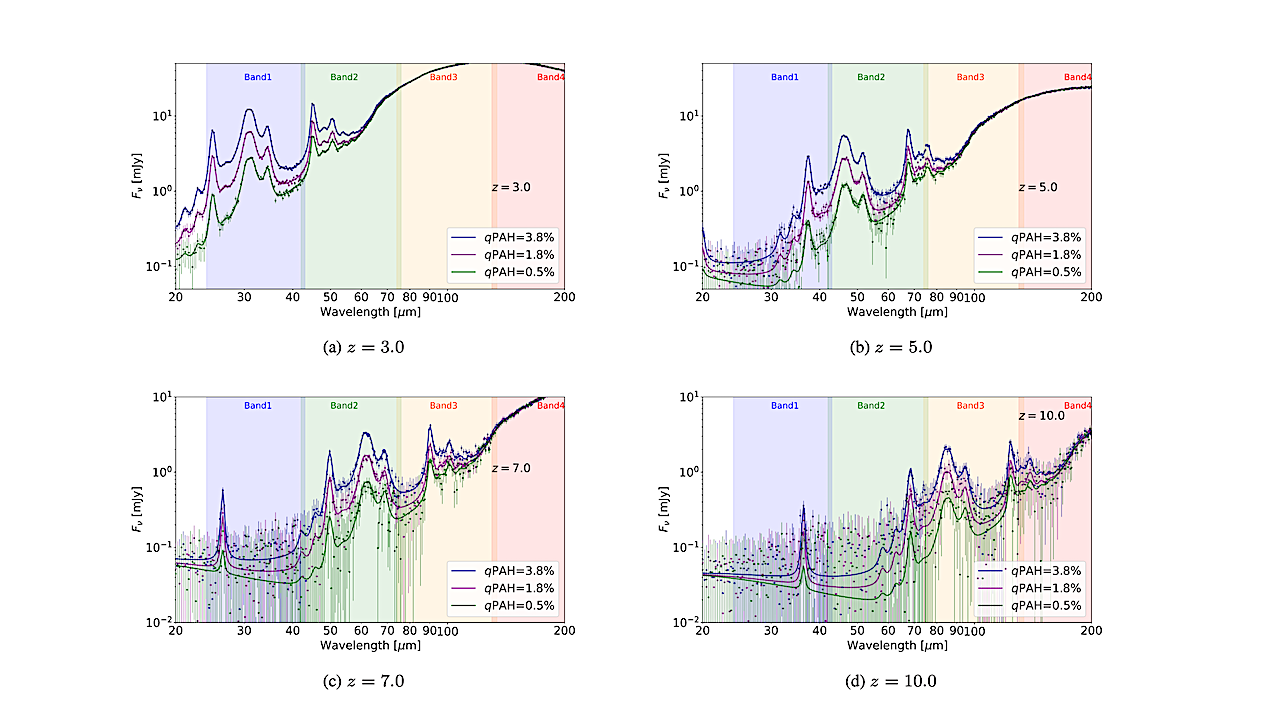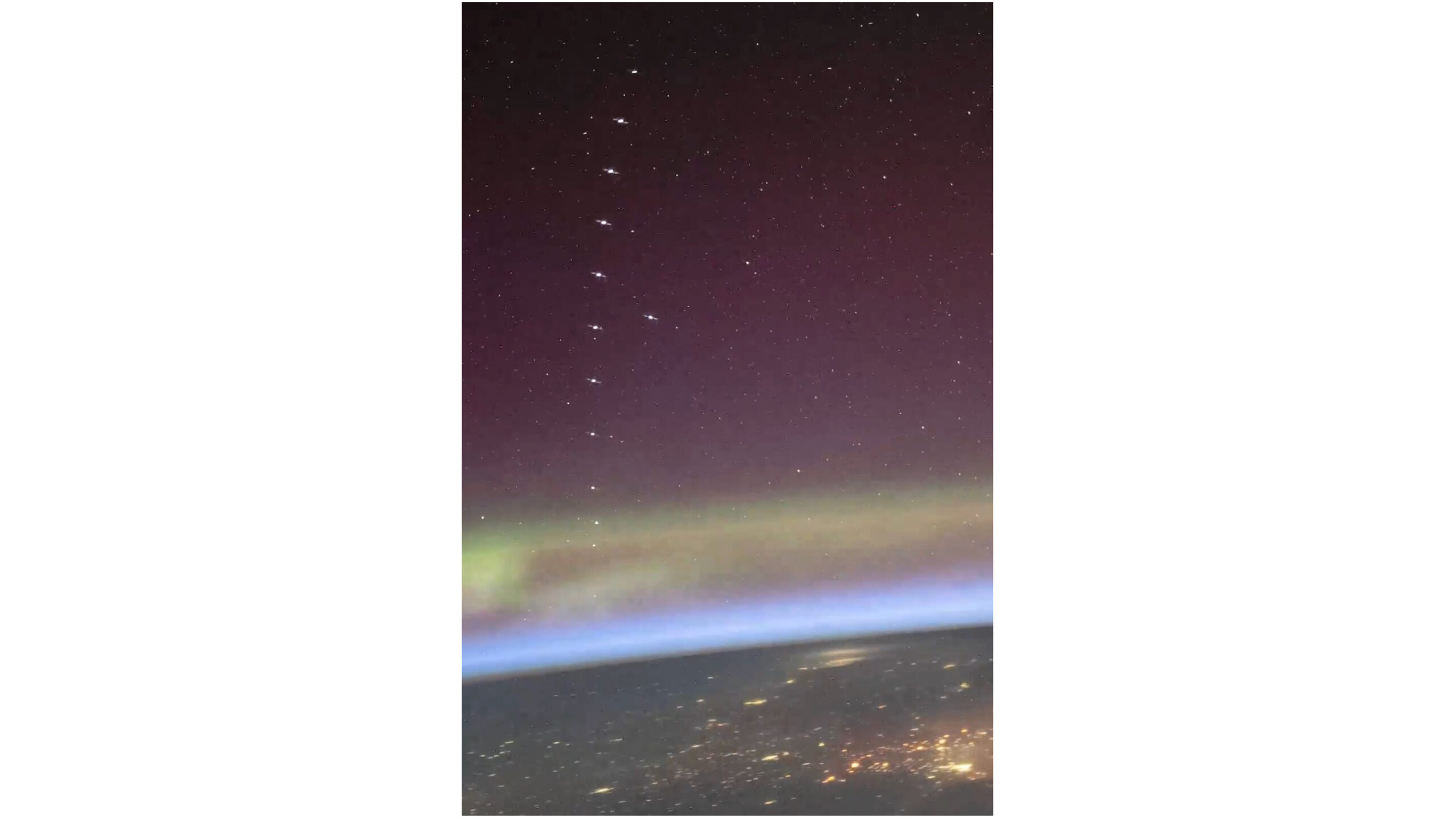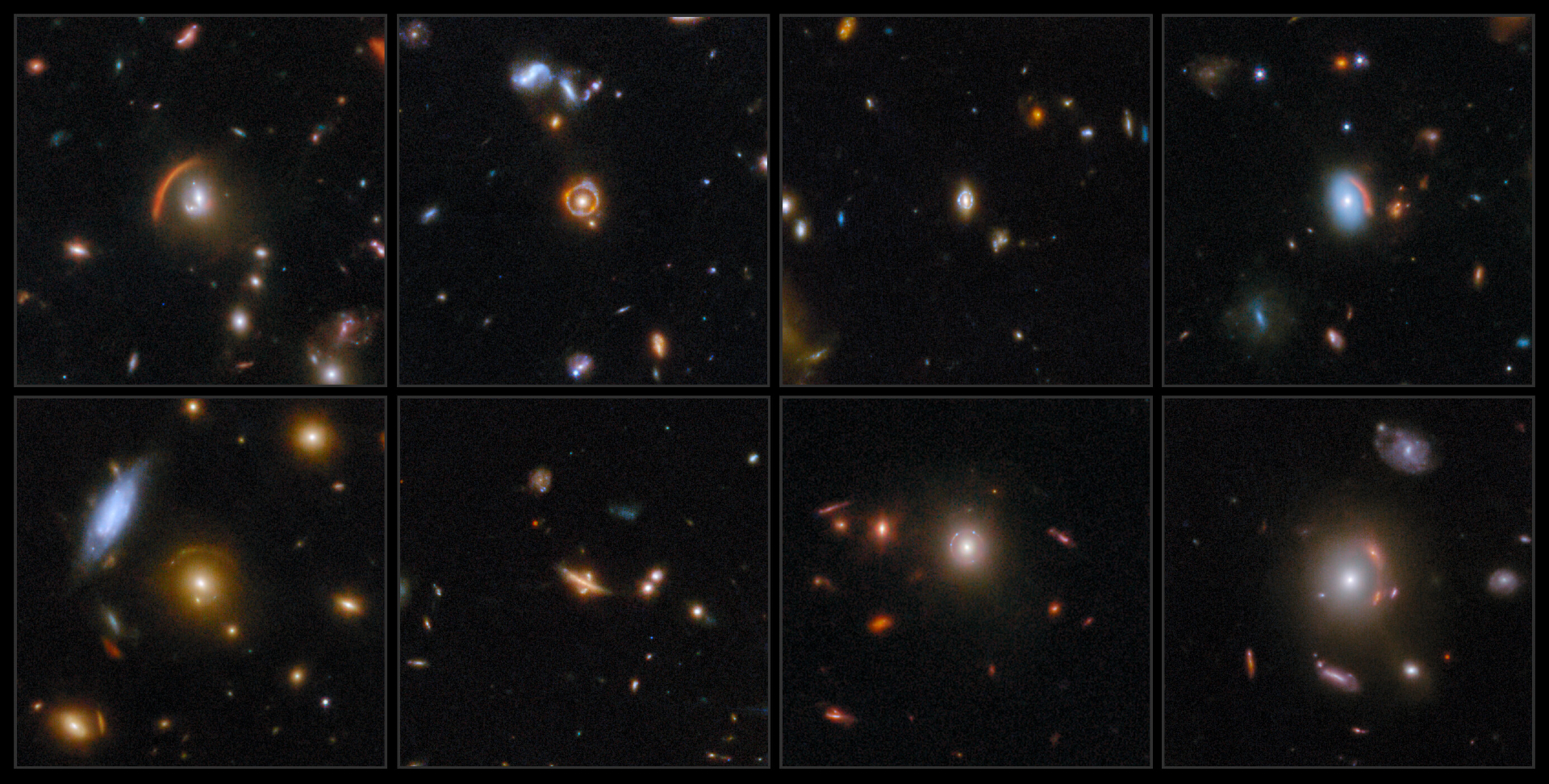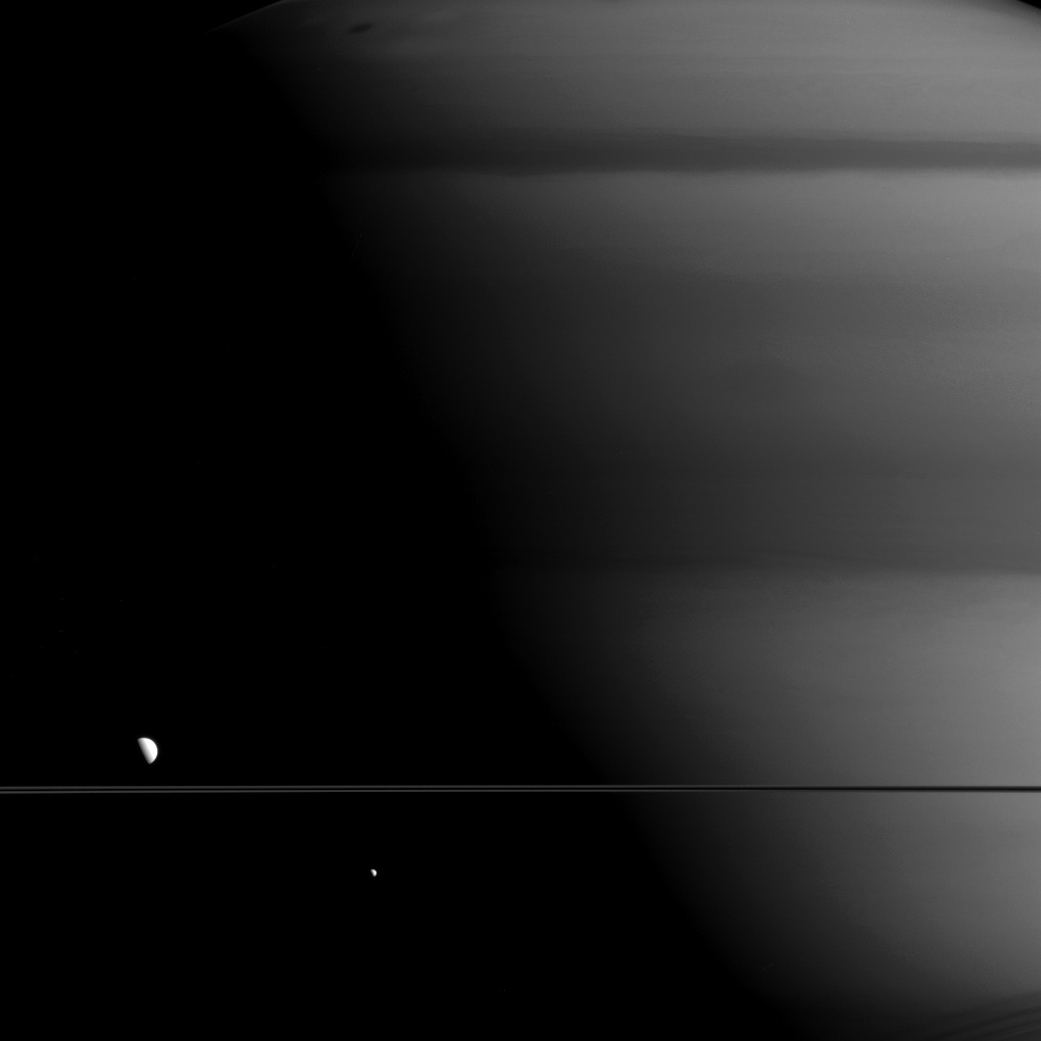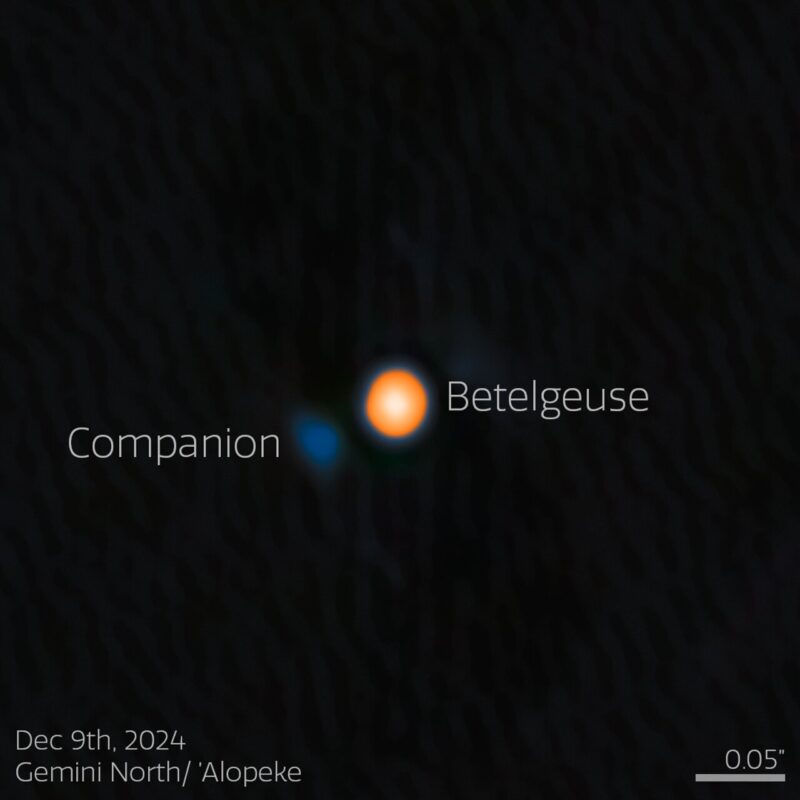(NewsNation) — Elon Musk’s Starlink satellites are now falling to earth with alarming frequency, according to famed Smithsonian astrophysicist Jonathan McDowell. McDowell recently told EarthSky that one to two Starlink
Archive for October, 202577- Page
Simulated PRIMA/FIRESS spectrum of the PAH emission based on the model spectrum for a galaxy with log(LIR/L⊙)= 13.6 in Fig.7(b) for selective redshifts (z = 3, 5, 7, 10). In
According to a new Physical Review Letters study, black holes could help solve the dark matter mystery. The shadowy regions in black hole images captured by the Event Horizon Telescope
An amazing new video shows flashes of sunlight sparkling off a batch of SpaceX satellites, with a green aurora glowing just below. NASA astronaut Don Pettit, an accomplished amateur photographer,
Peering into deep space, NASA’s James Webb Space Telescope has helped astronomers find places to study gravitational lensing, an effect in which massive objects such as galaxies warp space-time itself,
Scientists at the Leibniz Institute for Astrophysics Potsdam (AIP) have uncovered the intricate magnetic heartbeat of a distant star remarkably similar to our own sun—but much younger and more active.
CHRISTCHURCH, New Zealand — The New Zealand government is touting the progress it is making to grow the country’s aerospace industry. In a speech Oct. 8 at the New Zealand
An international team of astronomers has used the Atacama Large Millimeter/submillimeter Array (ALMA) to observe a well-known quasar known as the Cloverleaf. As part of the observations, they serendipitously discovered
The case for a newborn ocean on Saturn’s moon Mimas continues to build. Research mapping the thickness of the world’s icy crust not only provides a window for how old
The ‘Alopeke instrument on the Gemini North Telescope first captured Betelgeuse’s companion – nicknamed Betelbuddy – on December 9, 2024. Now, on October 8, 2025, Carnegie Mellon University researchers revealed
-
 012024 in Review: Highlights from NASA in Silicon Valley
012024 in Review: Highlights from NASA in Silicon Valley -
 02Panasonic Leica Summilux DG 15mm f/1.7 ASPH review
02Panasonic Leica Summilux DG 15mm f/1.7 ASPH review -
 03How New NASA, India Earth Satellite NISAR Will See Earth
03How New NASA, India Earth Satellite NISAR Will See Earth -
 04And Thus Begins A New Year For Life On Earth
04And Thus Begins A New Year For Life On Earth -
 05Astronomy Activation Ambassadors: A New Era
05Astronomy Activation Ambassadors: A New Era -
06SpaceX launch surge helps set new global launch record in 2024
-
 07Space Force plans new ‘Futures Command’ amid pressure to speed up modernization
07Space Force plans new ‘Futures Command’ amid pressure to speed up modernization



